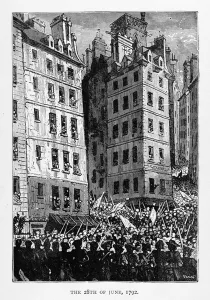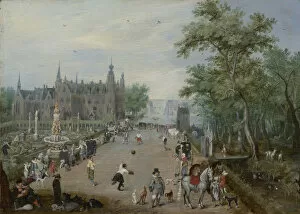Jeu De Paume Collection
Jeu de Paume, also known as real tennis, is a historic sport that dates back centuries
All Professionally Made to Order for Quick Shipping
Jeu de Paume, also known as real tennis, is a historic sport that dates back centuries. The construction of racquets for this game has been an essential aspect of its evolution. According to the Encyclopedia, players would use specially designed racquets to strike a ball against the walls of a court. One captivating engraving showcases individuals playing Jeu de Paume in Paris. The image transports us back in time, allowing us to witness the intensity and skill required to excel at this sport. Another engraving from 1792 depicts the solemnity surrounding Jeu de Paume as it captures the moment when deputies took an oath during gameplay. The popularity extended beyond Paris; it was enjoyed before country palaces as depicted by Adriaen Pietersz van de Venne's artwork from around 1614. This painting provides a glimpse into how nobility indulged in this elegant pastime. The architectural significance is evident through various locations mentioned throughout history. One such place is the former Palm game venue on Quai de Bourbon in Paris' IVEM ARR district. Additionally, there was another Palm game establishment commissioned by Bellanger, an architect hired by Count d'Artois on Le Boulevard du Temple. The political climate during certain periods intertwined with Jeu de Paume's legacy too. Notably, Gabriel de Saint-Aubin's artwork portrays an assault taking place within a game setting while referencing historical events surrounding politics and power struggles. Furthermore, oaths were taken during games like these – both at Versailles and elsewhere – symbolizing loyalty or commitment among participants or even spectators alike. Jeu De Paume holds immense cultural value due to its rich history and influence across different spheres - sportsmanship, architecture, artistry, and politics included. It continues to captivate enthusiasts worldwide who appreciate its elegance and heritage today.










